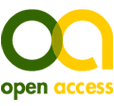Bitte benutzen Sie diese Kennung, um auf die Ressource zu verweisen:
http://dx.doi.org/10.18419/opus-13344
Langanzeige der Metadaten
| DC Element | Wert | Sprache |
|---|---|---|
| dc.contributor.author | Sahin, Ekin Sila | - |
| dc.contributor.author | Cheng, Tiffany | - |
| dc.contributor.author | Wood, Dylan | - |
| dc.contributor.author | Tahouni, Yasaman | - |
| dc.contributor.author | Poppinga, Simon | - |
| dc.contributor.author | Thielen, Marc | - |
| dc.contributor.author | Speck, Thomas | - |
| dc.contributor.author | Menges, Achim | - |
| dc.date.accessioned | 2023-07-26T14:25:25Z | - |
| dc.date.available | 2023-07-26T14:25:25Z | - |
| dc.date.issued | 2023 | de |
| dc.identifier.issn | 2313-7673 | - |
| dc.identifier.other | 1853819867 | - |
| dc.identifier.uri | http://nbn-resolving.de/urn:nbn:de:bsz:93-opus-ds-133638 | de |
| dc.identifier.uri | http://elib.uni-stuttgart.de/handle/11682/13363 | - |
| dc.identifier.uri | http://dx.doi.org/10.18419/opus-13344 | - |
| dc.description.abstract | Extrusion-based 4D-printing, which is an emerging field within additive manufacturing, has enabled the technical transfer of bioinspired self-shaping mechanisms by emulating the functional morphology of motile plant structures (e.g., leaves, petals, capsules). However, restricted by the layer-by-layer extrusion process, much of the resulting works are simplified abstractions of the pinecone scale’s bilayer structure. This paper presents a new method of 4D-printing by rotating the printed axis of the bilayers, which enables the design and fabrication of self-shaping monomaterial systems in cross sections. This research introduces a computational workflow for programming, simulating, and 4D-printing differentiated cross sections with multilayered mechanical properties. Taking inspiration from the large-flowered butterwort (Pinguicula grandiflora), which shows the formation of depressions on its trap leaves upon contact with prey, we investigate the depression formation of bioinspired 4D-printed test structures by varying each depth layer. Cross-sectional 4D-printing expands the design space of bioinspired bilayer mechanisms beyond the XY plane, allows more control in tuning their self-shaping properties, and paves the way toward large-scale 4D-printed structures with high-resolution programmability. | en |
| dc.description.sponsorship | Baden-Württemberg Stiftung | de |
| dc.description.sponsorship | Deutsche Forschungsgemeinschaft | de |
| dc.description.sponsorship | livMatS @ FIT-Freiburg Center for Interactive Materials and Bioinspired Technologies at the University of Freiburg | de |
| dc.language.iso | en | de |
| dc.relation.uri | doi:10.3390/biomimetics8020233 | de |
| dc.rights | info:eu-repo/semantics/openAccess | de |
| dc.rights.uri | https://creativecommons.org/licenses/by/4.0/ | de |
| dc.subject.ddc | 570 | de |
| dc.subject.ddc | 670 | de |
| dc.title | Cross-sectional 4D-printing : upscaling self-shaping structures with differentiated material properties inspired by the large-flowered butterwort (Pinguicula grandiflora) | en |
| dc.type | article | de |
| dc.date.updated | 2023-07-07T07:43:29Z | - |
| ubs.fakultaet | Architektur und Stadtplanung | de |
| ubs.fakultaet | Fakultäts- und hochschulübergreifende Einrichtungen | de |
| ubs.fakultaet | Fakultätsübergreifend / Sonstige Einrichtung | de |
| ubs.institut | Institut für Computerbasiertes Entwerfen und Baufertigung | de |
| ubs.institut | Stuttgart Research Center for Architecture: Integrative Design and Adaptive Building (ArchIDA) | de |
| ubs.institut | Fakultätsübergreifend / Sonstige Einrichtung | de |
| ubs.publikation.seiten | 15 | de |
| ubs.publikation.source | Biomimetics 8 (2023), No. 233 | de |
| ubs.publikation.typ | Zeitschriftenartikel | de |
| Enthalten in den Sammlungen: | 01 Fakultät Architektur und Stadtplanung | |
Dateien zu dieser Ressource:
| Datei | Beschreibung | Größe | Format | |
|---|---|---|---|---|
| biomimetics-08-00233.pdf | Artikel | 6,5 MB | Adobe PDF | Öffnen/Anzeigen |
| biomimetics-08-00233-s001.zip | Supplement | 6,68 MB | Unknown | Öffnen/Anzeigen |
Diese Ressource wurde unter folgender Copyright-Bestimmung veröffentlicht: Lizenz von Creative Commons


